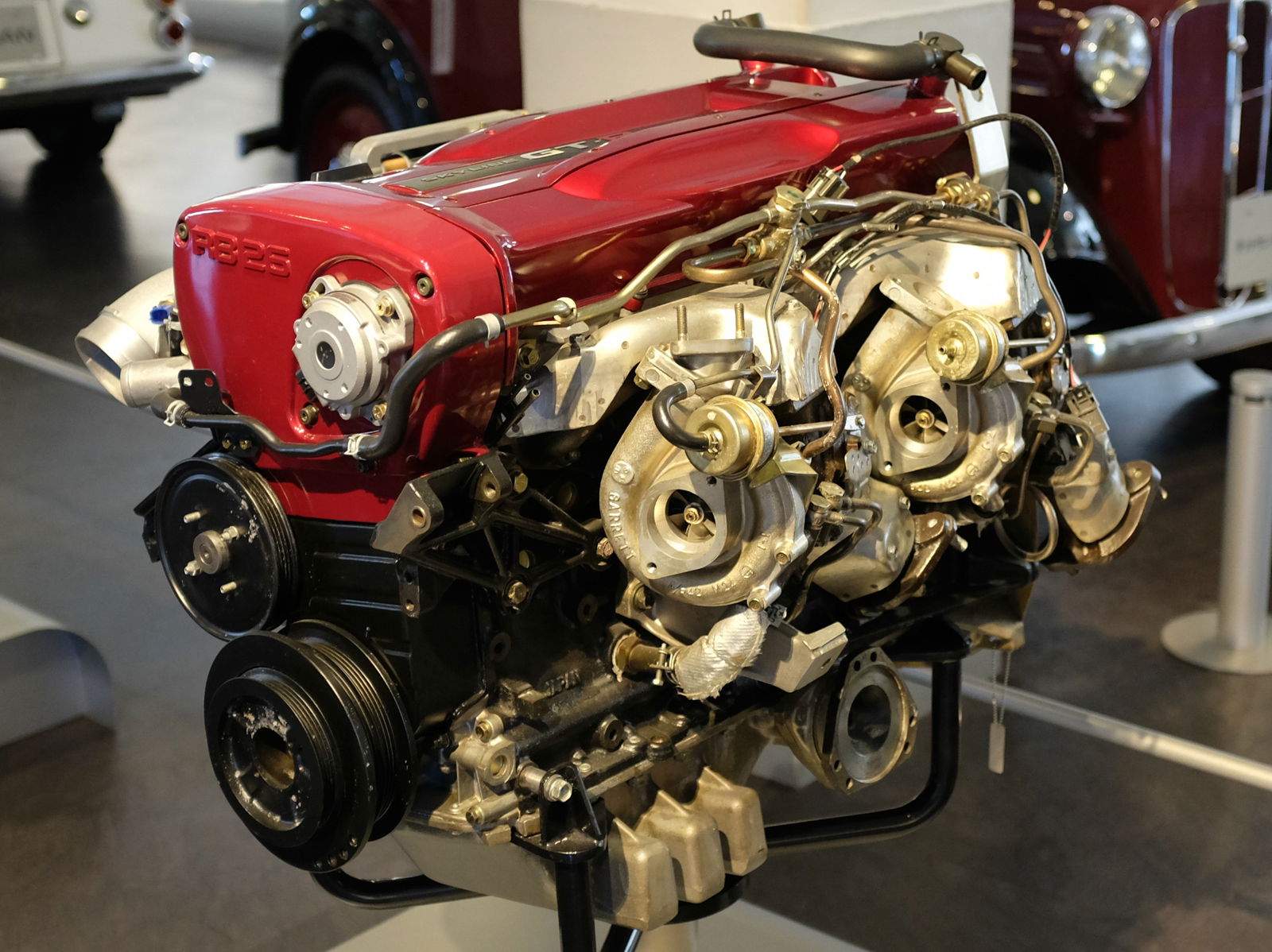10 Iconic Engines True Petrolheads Admire

Nissan SR20DET

The Japanese certainly know how to make a bullet proof engine, and the SR20DET, best known for its place in Nissan’s S-chassis, is the perfect example of this. Decently quick out of the factory, it became one of the darlings of the JDM tuning scene thanks to the fact it’s easy to tune and can take a decent hike in power without going pop.
In case you’ve ever wondered, SR is the engine’s code name, 20 refers to the 2.0-litre displacement, D refers to the fact it’s got a dual overhead camshaft, E stands for electronic fuel injection, and T means turbocharged. The more you know.
Porsche air-cooled flat sixes

These engines found their way into a number of Porsches, most notably the 959 supercar (in twin-turbocharged form, above) and every 911 from 1963 to 1998. One of the advantages of air-cooled engines over water-cooled engines is that they’re simpler and therefore easier to work on. They’re also lighter, which was useful for the rear-engined 911s as it meant the weight balance wasn’t quite so rear-biased.
Nissan RB26DETT

The RB26DETT isn’t one of those engines that powers a wide variety of cool cars from the factory, but it’s become an icon of the JDM scene thanks in part to the fact it’s the heart of the famous R34 ‘Godzilla’ GT-R. It’s also nearly invincible and ripe for high horsepower builds, making it supremely popular with tuners.
Suggested by Dude McDubbs.
426 Hemi: The Elephant

This wasn’t the first time Chrysler had used a hemispherical head design, but it was the first engine to wear the Hemi name when it was introduced in 1964. This is possibly the most ‘Murican engine of all time; it was nicknamed ‘The Elephant’ because it was really big and really powerful.
It was initially built for use in Nascar, and was then placed in road cars from 1965 for homologation purposes, with a few revisions. During the golden era of muscle cars, this was the biggest and baddest engine to have, and that alone makes it an icon.
Suggested by Jamal
Mazda's Wankel rotary engines

The rotary engine works on the same ‘suck, squeeze, bang, blow’ principle as a piston engine, however it goes about it in a very different manner. A triangular rotor rotates within a chamber which is shaped in a way that allows the air/fuel mix to be compressed against the flattened edge. It’s quite a complex cycle that is best explained using the following GIF…

The circular motion means the engines tend to be smooth and can achieve high RPMs, though they do have a reputation for using a lot of fuel and oil.
Mazda is best known for using these engines in the RX-7 and RX-8 road cars, as well as in the Le Mans-winning 787B race car. In that car, a four-rotor engine was used; adding multiple rotors is a popular modification for rotary tuners.
Toyota 2JZ

This one’s arguably the most iconic JDM engine of them all. It’s the 3.0-litre inline-six that was under that massive, bulging Toyota Supra bonnet. Like the other high performance Japanese engines in this list, it’s the aftermarket scene that has made this such a hero, thanks to the fact that it can take ridiculously huge horsepower gains.
These traits also made it hugely popular in the drift scene, as you could tune it high and bounce off the rev limiter without worrying about your engine going bang.
Suggested by Travis Aerenson.
Aston Martin V12

If you didn’t know any better, you’d probably expect that the engine at the heart of such soulful cars was hand-crafted by God-like engineers in the rolling hills of England while sipping tea and moaning about the weather. Not quite. The V12 engine that’s responsible for giving petrolheads ‘the fizz’ is essentially two Ford Mondeo V6s strapped together. Not quite so romantic now, eh?
To see and hear this engine in action, check out our video review!
The ‘boxer’ engine involves each bank of pistons working opposite each other, and Subaru made the engines their own thanks to its application in the Impreza WRX/STI road cars. Even the most casual petrolhead will be able to tell a Scooby coming a mile off.
The advantages of the boxer include the fact that because the pistons are laying on their side, the height of the engine is lower, helping to lower the car’s centre of gravity, as well as the fact that it is inherently balanced thanks to the opposing pistons’ inertia cancelling each other out.
Suggested by Hussein Al-sheikhly.
Chevrolet '350' V8

The Chevrolet small block V8 was the go-to GM engine since it appeared in the 1967 Chevrolet Camaro. It was eventually replaced by the LT and LS motors in the 90s, but didn’t go out of production until 2003. In fact, such is the popularity of the engine with modifiers and hot rodders, that a factory in Mexico still churns out 350s today.
GM's LS V8 series

After the Chevrolet small block there was the LS V8. It was designed from a clean slate, sharing only the rod bearings from the older engine. What makes this engine so iconic, and arguably the most iconic engine in production today, is that thanks to its relatively small dimensions, it is popular as an engine swap in a wide variety of applications.
Thanks to this, and the fact that there’s an abundance of parts and expertise on the engines, they’re also hugely popular with startup supercars. Every time some rich billionaire announces the new car he’s decided to build, you can bet it’ll be running an LS V8.
Thanks to everyone who suggested an engine for the list in the original post!
Comments